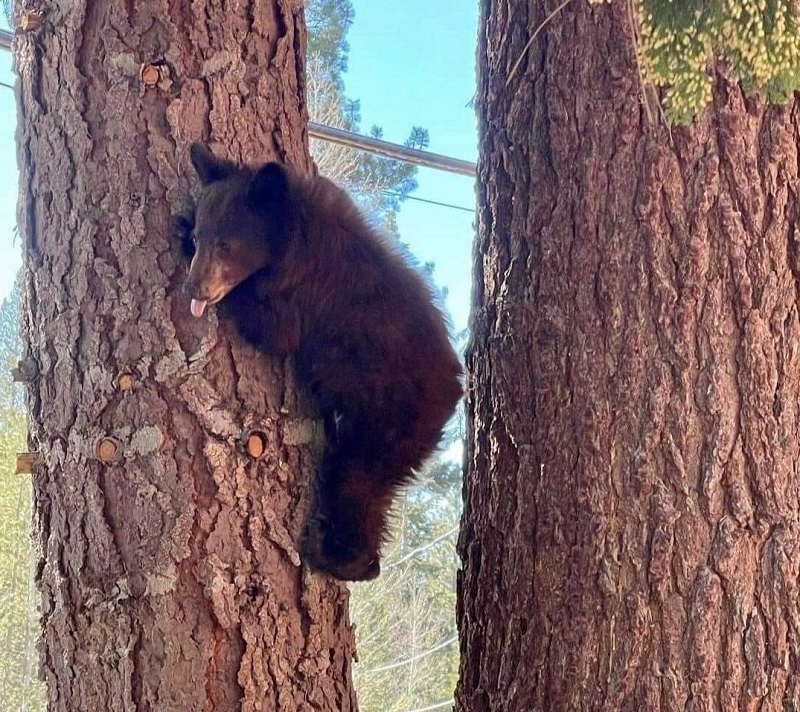Within hours of receiving authorization to care for bear cubs again, Lake Tahoe Wildlife Care welcomed an orphaned, 25-pound bear cub from Tulare County to its improved South Lake Tahoe facility December 8, 2021.
Three more orphaned cubs – two siblings from the South Lake Tahoe area and a third cub from the Coleville area in Mono County – were transferred shortly thereafter from Gold Country Wildlife Rescue in Auburn to Lake Tahoe Wildlife Care to prepare the cubs for hibernation in a high-country climate similar to where they were rescued and where they will ultimately be returned to the wild.
“Lake Tahoe Wildlife Care is an important partner, one with decades of experience rehabilitating and releasing bear cubs back to the wild,” said Dr. Brandon Munk, wildlife veterinarian for the California Department of Fish and Wildlife (CDFW). “We’ve been working closely with them to ensure we are all maintaining the best possible standards for bear rehabilitation in this state.”
Munk was among five CDFW employees who conducted a site inspection of Lake Tahoe Wildlife Care’s facilities December 7, 2021 prior to renewing its permit to temporarily possess and rehabilitate injured and orphaned black bear cubs.
Lake Tahoe Wildlife Care operates under a CDFW wildlife rehabilitation permit to conduct care and rehabilitation of native wildlife -- excluding big game species such as deer, elk, and black bears. Lake Tahoe Wildlife Care had a secondary agreement with CDFW to rehabilitate black bear cubs that expired on July 22, 2021. Efforts to renew that secondary permit were temporarily delayed by the much-publicized escape this summer of a bear cub injured in the Tamarack Fire while recovering at Lake Tahoe Wildlife Care.
CDFW required Lake Tahoe Wildlife Care to make several improvements to its facility enclosures and fencing as part of the permit renewal process to possess bears.
Lake Tahoe Wildlife Care is just one of four wildlife rehabilitation facilities in the state permitted to care for black bear cubs, joining Gold Country Wildlife Rescue in Auburn, Sonoma County Wildlife Rescue in Santa Rosa and the San Diego Humane Society’s facility in Ramona.

Wildlife watchers kept a close eye on this orphaned black bear cub from Tulare County before it was eventually captured and transferred to Lake Tahoe Wildlife Care in South Lake Tahoe for rehabilitation and preparation for eventual release into the wild. Photo courtesy of Lake Tahoe Wildlife Care.
The South Lake Tahoe facility plays an outsized role in bear rehabilitation given its decades of experience and its location in the Lake Tahoe Basin, the area being a continual source of human-bear conflicts and bear issues of all kinds – from wildfires to vehicle strikes on busy Lake Tahoe-area roads.
The fortifications to its bear enclosures are just the beginning of several improvements coming to Lake Tahoe Wildlife Care as part of a planned expansion effort.
The facility has met and exceeded a $500,000 matching grant that will fund construction of a new wildlife animal hospital and care unit. The new facility will feature animal hospital services, a neonatal nursery, operating room and recovery rooms, along with other care and treatment spaces needed for a full-service wildlife veterinary hospital, including 24-hour care services. When completed, rescued native wildlife in the Lake Tahoe Basin can be cared for in the region’s first dedicated wildlife animal hospital. Construction is expected to begin in the spring of 2022.